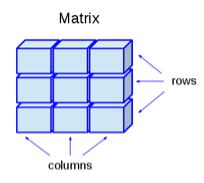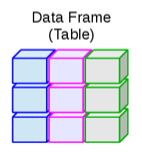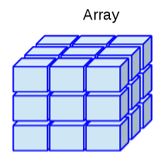![]()
Data Types in R take on an interesting twist in contrast to other traditional programming languages like Java and C. In R, the variables are not “declared” with any data type, the variables are assigned some values and the values itself will determine the data type of the variable.
R is a very powerful language for data analysis, and I feel that a core understanding of the underlying data types are very important to design your R application wisely and effectively. So what are the data types in R? I wanted to compile a simple definition of the different data types, so I decided to create a quick summary here.
The core data types are:
| Data Type | Description | Example |
|---|---|---|
| Numeric | This is similar to double or float in other languages. Number with decimal point. | 20.5, 100.25, 10 |
| Integer | Whole number, without any decimal point. | 15, 7, 200 |
| Logical | Boolean | TRUE, FALSE |
| Character | Character strings | "New Story", "a", "yes" |
| Complex | An numeric expression with an i variable | 3.6+2i |
| Raw | Binary data | 48 65 6c 6c 6f = "Hello" |
And the more interesting data types are:
Sample Codes
Vectors
> num_vector <- c(1,4,6,2.3)
> char_vector <- c("a", "b", "cd")
>
> num_vector
[1] 1.0 4.0 6.0 2.3
> char_vector
[1] "a" "b" "cd"
Matrices
> M1 = matrix(c("a", "b", "b", "c", "d", "a"), nrow=3, ncol=3)
> M1
[,1] [,2] [,3]
[1,] "a" "c" "a"
[2,] "b" "d" "b"
[3,] "b" "a" "b"
Data Frames
> v1 = 1:4
> v2 = c("one","two","three","four")
> v3 <- c(T,F,T,F)
> df <- data.frame(v1,v2,v3)
> df
v1 v2 v3
1 1 one TRUE
2 2 two FALSE
3 3 three TRUE
4 4 four FALSE
Arrays
> a1 <- array(1:27, dim=c(3,3,3)) > a1 , , 1 [,1] [,2] [,3] [1,] 1 4 7 [2,] 2 5 8 [3,] 3 6 9 , , 2 [,1] [,2] [,3] [1,] 10 13 16 [2,] 11 14 17 [3,] 12 15 18 , , 3 [,1] [,2] [,3] [1,] 19 22 25 [2,] 20 23 26 [3,] 21 24 27
Lists
> l1 <- list(c(1:4), TRUE, sin)
> l1
[[1]]
[1] 1 2 3 4
[[2]]
[1] TRUE
[[3]]
function (x) .Primitive("sin")
Factors
> colors <- c("red", "blue", "red", "green", "red", "blue")
> colors_factor <- factor(colors)
> colors_factor
[1] red blue red green red blue
Levels: blue green red




